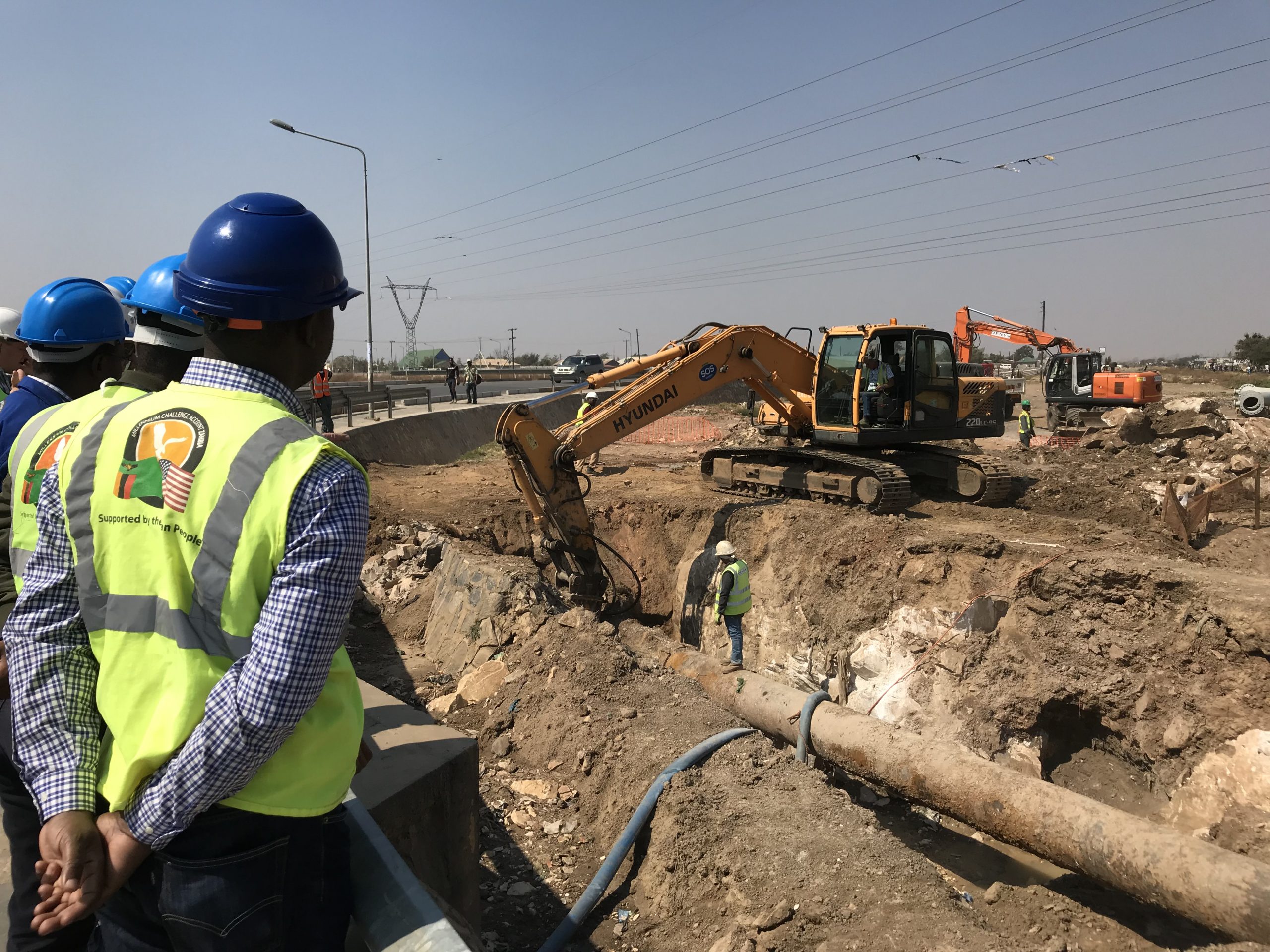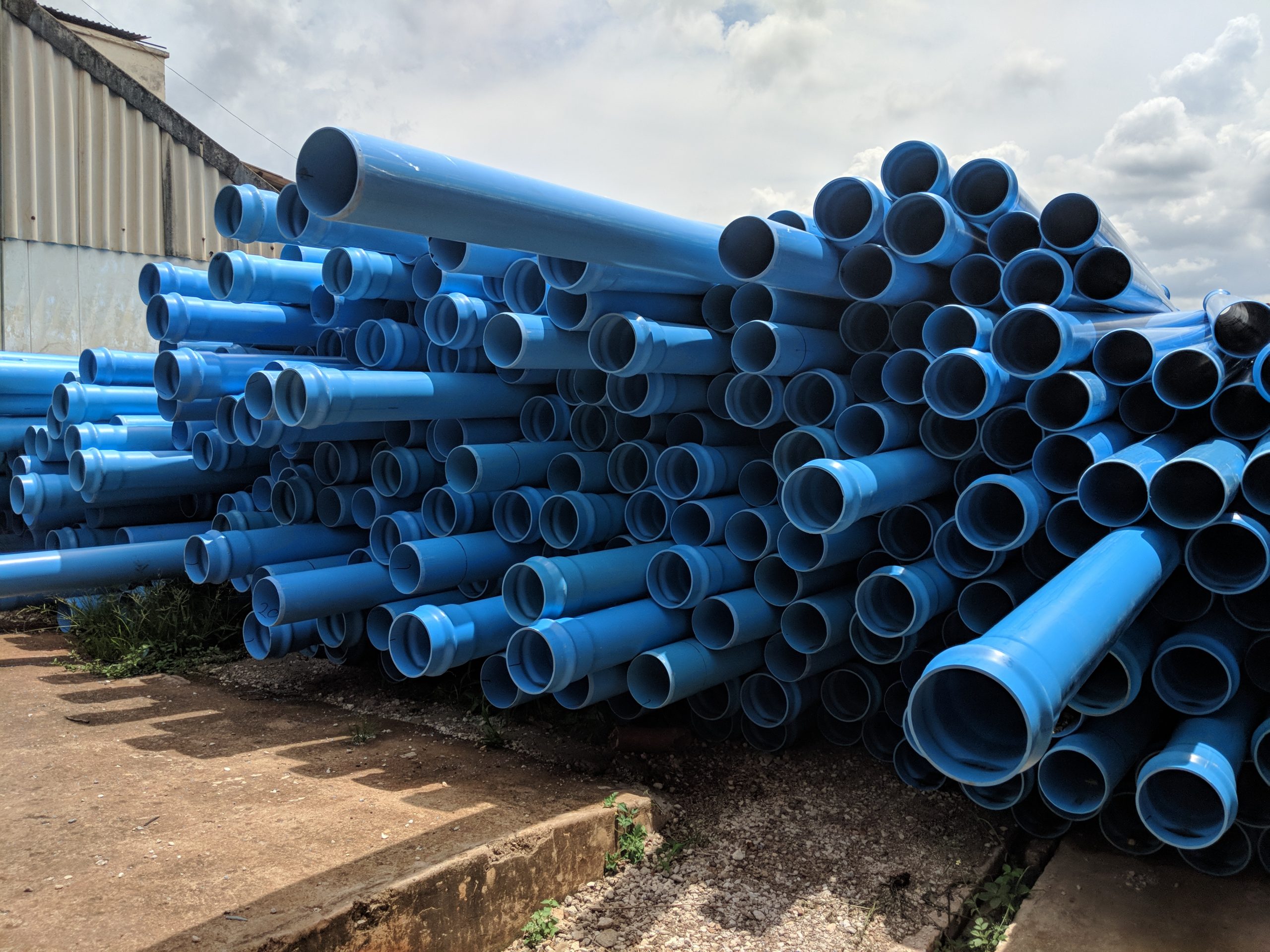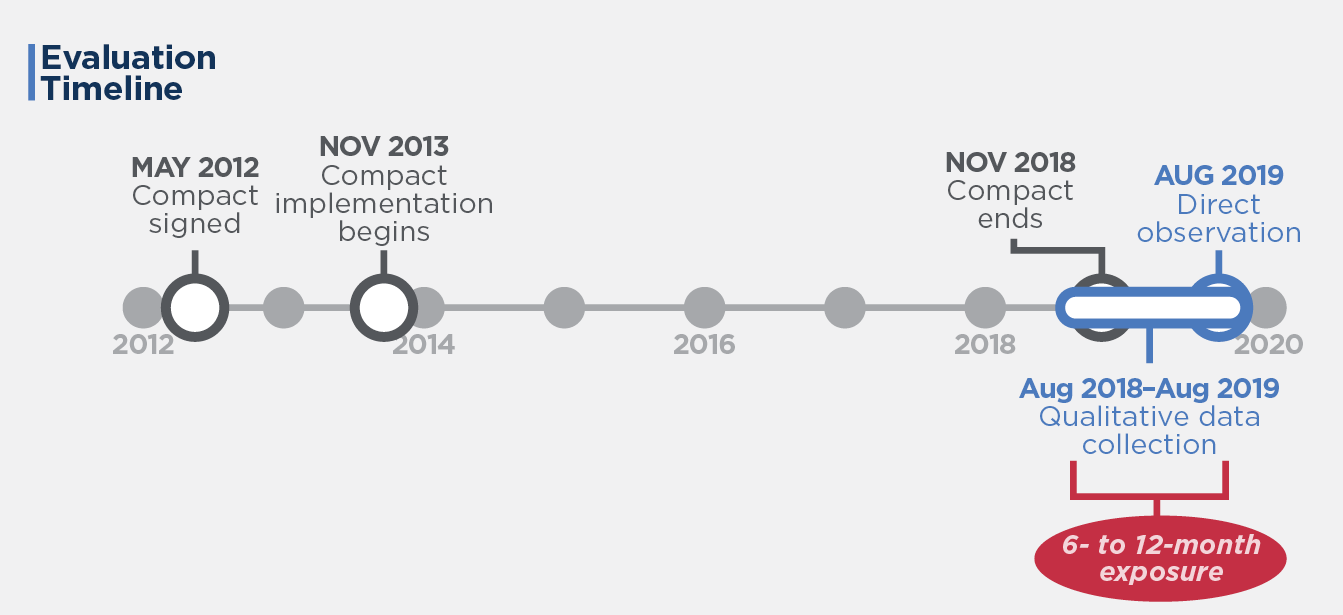Program Overview
MCC’s $354 million Zambia Compact (2013-2018) funded the Lusaka Water Supply, Sanitation, and Drainage Project to rehabilitate and extend infrastructure and strengthen the institutional capacity of the Lusaka Water and Sewerage Company (LWSC) and Lusaka City Council (LCC). These investments were expected to improve LWSC’s financial sustainability and the LCC drain maintenance unit, thereby improving service delivery, preventing flooding, generating time-savings for households, and reducing water-related diseases. These outcomes would then raise household incomes and reduce property damage and business losses due to flooding.
Key Findings
Completion of Infrastructure Works
- Within a year after the compact, most of the infrastructure works were complete. Significant work remained on the sewer network extensions in peri-urban neighborhoods and the establishment of district metering areas.
Strengthening Financial Sustainability at LWSC
- Technical assistance enabled LWSC to adopt new policies and practices to improve asset management. New water meters and an update of the customer database increased revenue for LWSC by about 3 percent, but the utility did not maximize the impact of these activities.
Flood Reduction Across Lusaka
- Residents and businesses along the drains perceived reduced flooding due to the new primary drains, though the drains’ usefulness is limited without secondary drains. A few months after construction ended, most new drains were well maintained.
- Technical assistance helped design a new solid waste management utility for Lusaka to prevent the drains from becoming clogged with trash. Legislation to create the new utility was passed but progress on establishing it stalled.
Beneficiary Perspectives on Service Delivery
- Delays and disruptions related to construction of the water and sewer extensions in peri-urban neighborhoods frustrated many residents. Perceptions of poor service quality from LWSC discouraged many households from connecting to new sections of the piped water network.
Evaluation Questions
This interim performance evaluation was designed to answer the following questions.
- 1
Were the infrastructure and institutional strengthening activities implemented as designed? What were implementation challenges and successes? - 2
Was the compact effective at increasing LWSC’s operational efficiency and financial sustainability (including improved asset management)? - 3
Did the technical assistance to LCC catalyze improved long-term sustainability of drainage operations and solid waste management? - 4
What were beneficiary perspectives on service delivery and infrastructure implementation after being exposed to information, education, and communication and sanitation marketing activities during the compact?
Detailed Findings
Completion of Infrastructure Works

Primary drainage constructed as part of the compact
Most of the infrastructure was completed during the compact, including rehabilitation of the core water network and the Kaunda square wastewater stabilization ponds, extension of the water network in several peri-urban neighborhoods, and improvements to the Bombay drain. The sewer network extensions in the peri-urban neighborhood of Mtendere and the isolation of district metering areas remain unfinished because of contractor underperformance.
Strengthening Financial Sustainability at LWSC
LWSC ratified an asset management policy, created an asset management department, trained hundreds of staff, and established a steering committee to ensure all of the company’s divisions improve their asset management practices.
LWSC also rolled out a new, centralized electronic maintenance management system that tracks all maintenance tasks and promotes staff accountability. Six months after compact close, the system was fully operational for reactive maintenance tasks all across Lusaka province. The company’s new focus on preventive and reactive maintenance activities should contribute to more effective financial planning, ultimately bolstering LWSC’s financial stability, but it is too soon to judge the impact of these initiatives.
LWSC installed more than 8,000 new postpaid meters. Based on temporal changes in the bills of customers who received new meters, the activity increased bills by around $4.30 per customer per month, which translates to $29,777 in revenue (about 2 percent of monthly LWSC revenue). LWSC could have increased billing even more by prioritizing previously unmetered customers.
The project also conducted a census of all structures in Lusaka to enable LWSC to update more than 165,000 records in their database, though the vast majority had no effect on billing. The activity led to a net increase in billing of $4.60 per updated customer account per month, or $15,923 in revenue (about 1 percent of monthly LWSC revenue).
Flood Reduction across Lusaka

MCA-Zambia personnel supervising pipe replacement in Lusaka
Residents and business owners along the drains perceived that the new drains reduced flooding, bringing health and mobility benefits. In some areas, however, the lack of secondary drainage has limited the new drains’ effectiveness because there is nothing to lead rainwater from the neighborhoods into the main drains. In some areas, disorderly demobilization by the bankrupt contractor left mounds of dirt, contributing to continued flooding. Under the project, fences were built along the drains, but vandals have broken apart concrete posts to steal the materials. The absence of fencing along both completed and incomplete sections of the drain represents a major danger to residents, who could fall in.
In October 2018, Parliament passed a law authorizing the creation of the Lusaka Integrated Solid Waste Management (SWM) Company based on the compact-funded technical assistance. The law officially transfers control of collection and disposal of solid waste to the company from LCC and provides it with an independent budget. As of February 2020, the Ministry of Local Government had yet to operationalize the new utility.
Beneficiary Perspectives on Service Delivery
Construction delays and disruptions in the low-income community of Mtendere frustrated many residents who initially welcomed the project with excitement. As of April 2019, no one in the eastern section of the community had been able to connect to either the water or sewer line. In the western part, the construction led to disruptions in water supply and residents continued to pay their monthly fixed bills even though water hardly ever flows to them. Some residents reported constructing new toilets, which they cannot use without a functional sewer.
Under the project, the piped water network was extended into new residential neighborhoods that are still being developed. Many residents have connected to the water network in these neighborhoods, but roughly equally many have not.
MCC Learning

New water pipes to be installed to extend water network across Lusaka
MCC must ensure that all activities have a well-articulated project logic leading to key outcomes of interest.
MCC should consider the suitability of decentralized solutions to drainage in urban centers, rather than retrofitting large backbone drainage infrastructure in dense urban centers, which can become clogged with solid waste.
MCC compacts should prioritize building data capacities of beneficiary institutions from the earliest engagement to support development of data-driven program design and to facilitate effective monitoring and evaluation during and after compact close.
Evaluation Methods

The mixed-methods performance evaluation consisted of a qualitative implementation assessment and an outcome assessment that traces the potential effects of project activities on LWSC, LCC, and beneficiary households and businesses by triangulating the evidence from various sources. Qualitative data collection started three months prior to the end of the compact and continued nine months after the end of the compact.
The implementation assessment included a document review of project-wide documents (N=50 documents); key informant interviews with project implementers, LWSC and LCC staff, relevant donor organizations in Lusaka, and government officials (N=47 interviews); focus group discussions with beneficiary households (N=18 FGDs); and structured interviews with beneficiary households, business operators, and water trust managers (N=44 interviews).
The outcome assessment included the same qualitative data and methods but focused on different outcomes as defined in the project logic. It also included direct observation of the drains and newly constructed water kiosks (N=48 locations). Additionally, Mathematica used quantitative LWSC customer billing data and a event study (regression discontinuity) approach to quantify the effect of two interventions to reduce commercial non revenue water (meter installation and LWSC customer database update) on the outcome “LWSC’s financial sustainability”.
Next Steps
Results from the final round of the evaluation are expected to be available in 2023.
2020-002-2437


